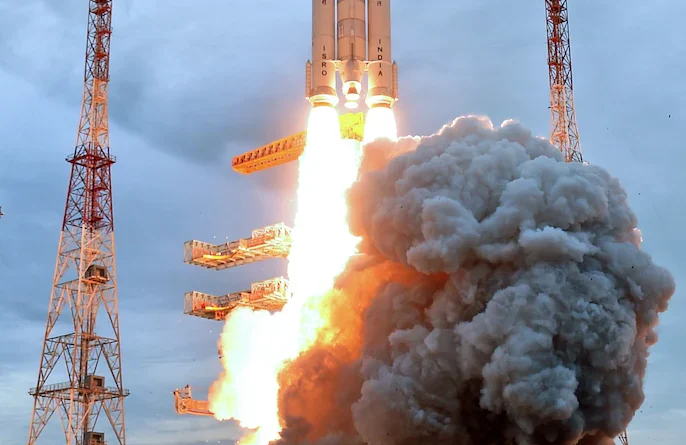After Chandrayaan 3 Success, India Plans Chandrayaan 4 with Japan
The Indian Space Research Organisation (ISRO) made history on August 23 with the successful landing of Chandrayaan 3 on the southern polar region of the moon. With this, India has become the first and only country to land its spacecraft on the moon’s polar region and deploy a rover. The Vikram Lander and Pragyaan rover will now remain active in the region for the next 14 days to conduct experiments on the lunar surface.
The mission duration of both the lander module and the rover is one lunar day, which is equivalent to 14 Earth days. The lander has five scientific instruments for specific objectives on the Moon. The rover has an instrument called an Alpha Particle X-ray spectrometer, which will measure the chemical and mineralogical composition of the lunar surface and help us learn more about it.
With Chandrayaan 3 mission near to be completed, ISRO eyes on the next phase – Chandrayaan 4 mission. This time, the ISRO will collaborate with the Japan Aerospace Exploration Agency (JAXA) to work on the Lunar Polar Exploration Mission (Lupex). The mission is also referred to as Chandrayaan-4 and will seek answers to the most tantalizing question – Is there water on the moon?
In recent years, scientists have seen hints of water on the moon from observational data. If the Chandrayaan 4 mission is successful, it could have profound implications for the future of space research. It will serve as a valuable resource for sustaining human life on the moon. Lupex aims to be the pioneer in providing solid solutions to these questions.
Chandrayaan-4 Mission Objectives
The primary goal behind the Chandrayaan 4 mission is to investigate the presence of water in the lunar polar region. The mission will be based on two fundamental avenues: determining the quality and quantity of the lunar water.
The goal of the quantity aspect is to determine the actual amount of water available in the expected areas based on existing observational data. Lupex will collect direct measurements and “ground truth data” to provide a crucial baseline for estimating how much water needs to be brought from Earth for future lunar missions and how much can be obtained locally. This data could change the way we think about the cost and feasibility of lunar exploration.
At the same time, the quality aspect aims to understand the location, condition, and type of lunar water resources by making direct observations in the polar regions of the Moon. Knowing these parameters is essential for using lunar water effectively for propulsion, life support, or as a shielding material.
How ISRO and JAXA Plans for Chandrayaan 4’s Success?
To accomplish these objectives, Lupex will use a state-of-the-art spacecraft with thin-film solar cells and batteries with very high energy density, ensuring continuous power supply even in the lunar night or in shaded areas. This technological innovation is vital for the rover’s movement and survival in the harsh lunar environment.
Lupex aims to improve the technology needed for surface exploration on the moon’s low-gravity celestial bodies. This includes enhancing mobility solutions, mastering lunar night survival mechanisms, and creating excavation methods for possible mining operations. These improvements will support future lunar activities and also have implications for future space missions to Mars.
The joint mission between ISRO and JAXA combines the strengths of both countries to find water resources on the lunar surface while also enhancing our knowledge of lunar conditions and preparing for sustainable lunar exploration. The mission could take off as early as 2026.
Now that you have gained valuable insights into India’s Chandrayaan 4 mission let’s talk about the success of the Chandrayaan 3 mission.
Timeline of Chandrayaan 3 Mission
On July 14, the spacecraft took off from Sriharikota’s secondary pad, propelled by an LVM3 M4 vehicle into its assigned orbit.
- The spacecraft entered a translunar orbit on August 1.
- Chandrayaan 3 successfully made it to the lunar orbit on August 5.
- On August 14, the spacecraft got closer to the lunar surface, achieving a 150 km x 177 km orbit.
- On August 17, Chandrayaan’s landing modules – Vikram lander and Prgyan rover separated from the propulsion system.
- On August 23, Chandrayaan 3 began a lunar touchdown at 5:47 pm IST with a soft landing at 6:04 pm IST.
What’s Next for Chandrayaan 3?
India achieved a remarkable feat by landing the Vikram lander and the Pragyan rover on the lunar surface, but the real challenge will start now. The Pragyan rover will explore the Moon’s terrain for one lunar day (14 Earth days) with the help of five scientific instruments on board the Vikram lander and the rover.
The Vikram lander will open one of its side panels, along with a ramp for the six-wheeled vehicle Pragyan, after it settles on the Moon’s surface. Pragyan will come out of the lander’s belly after four hours and will move at a speed of 1 cm per second – using navigation cameras to scan the surroundings.
As the rover moves, it will imprint the national flag of India and ISRO’s logo on the lunar regolith (soil). The rover and lander will have two weeks to conduct their studies on the Moon. The rover is equipped with payloads to collect data about the Moon’s surface – such as its composition and more.
Conclusion
India has accomplished a remarkable feat by landing the Chandrayaan-3 mission on the Moon’s south pole and releasing a rover that will perform scientific experiments for 14 days. But this is not the end of India’s lunar exploration ambitions. India is already planning for the next mission, Chandrayaan-4, in partnership with Japan.
This mission, also known as LUPEX, will examine the permanently dark regions of the Moon and probe the existence and potential usability of water resources.
